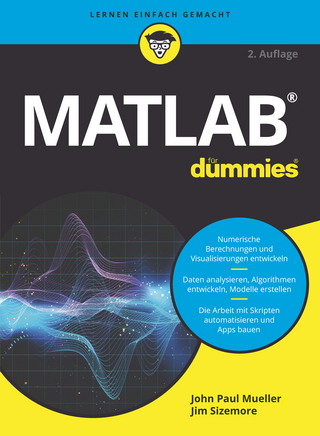
Mechanics of Sandwich Structures
Springer (Verlag)
978-0-7923-5050-7 (ISBN)
General Lectures.- Classification of structural sandwich panel behaviour.- The development of sandwich structures for naval vessels during 25 years.- Damage tolerance of aeronautical sandwich structures.- Modeling of the crash behaviour of edge loaded sandwich structures with fibre reinforced polymer faces.- Contributions.- A comparative analysis of some theories and finite elements for sandwich plates and shells.- Static analysis of sandwich plates by finite elements.- A refined multilayered FEM model applied to sandwich structures.- A refined shear-deformation sandwich finite element.- Comparison of three shear-deformation theories in the non-linear analysis of sandwich shell elements.- On shear and bending membrane coupling in sandwich shells with elastic or viscoelastic core.- Bending, buckling and free vibration of sandwich composite beams with a transverse shear stress continuity model.- Stress distribution in a 4-point or 3-point bending probe.- Saint-Venant’s principle for sandwich structures.- Membrane analogy for sandwich panels in thermally or piezoelectrically induced bending.- Homogenization of periodic sandwiches.- Characterization and simulation of the mechanical behaviour of multilayered components composing a fibrous cylinder head gasket.- Prediction of elastic properties of sandwich panels using a homogenization computational model.- Effects of boundary conditions in high-order buckling of sandwich panels with transversely flexible core.- A study on the influence of local buckling on the strength of structural core sandwich structures.- Boundary effects and local stability of sandwich panels.- Overall behaviour of laterally loaded shallow sandwich panels.- Geometric non-linear analysis of sandwich structures.- Plastic interface stability inbimetallic layers subjected to biaxial loading.- Dynamic behaviour of sandwich structures used in air transport.- Identification of the dynamic material properties of composite sandwich panels with a mixed numerical experimental technique.- New elastodynamic solutions to forced vibration problems of layered rectangular viscoelastic plates.- Theory for small mass impact on sandwich panels.- Effect of ballistic impact on the compression behaviour of carbon/glass hybrid composite sandwich panels for military bridging structures.- Penetrating impact strength of sandwich panels-meaningful test method and simplified prediction.- Contribution of the response surface methodology to the study of low velocity impact on sandwich structures.- Energy absorption characteristics of a foam-cored sandwich panel with fibre-reinforced plastic inserts.- Theoretical and experimental analysis of dissymmetrical sandwich plates with compressible core.- Viscoelastic properties of steel/polymer/steel sandwich structures.- Bending fatigue behaviour of PUR-epoxy and phenolic 3D woven sandwich composites.- Characterization of the mechanical behavior of wood laminates with the help of a flexion-compression device.- Applying the grid method to the measurement of displacement and strain fields through the thickness of a sandwich beam.- Moisture detection in sandwich plates using infrared thermography under microwave excitation.- Modelling of the core properties of sandwich-fabric panels with the help of finite elements.- Determination of material properties for structural sandwich calculations: from creep to impact loading.- Mechanical modelling and characterisation of a new structural filler made of small spheres assembly.- Experimental determination of the dynamic properties of a soft viscoelasticmaterial.- Recent developments in 3D-knittings for sandwich panels.- A new sandwich panel (skin in glass-carbon hybrid fabric/core in carbon mat): manufacturing and mechanical characteristics.- Sandwich panels for high speed airport shuttle.- Finite element aided design software for laminated and sandwich plates.- Genetic algorithm and performance indices applied to optimal design of sandwich structures.- Construction methods for big and heavy loaded fibre reinforced composite sandwich structures demonstrated on a Ses hull.- Sandwich plates with «Through-the-thickness» and «Fully potted»inserts.- Failure modes in sandwich T-joints.- List of Participants.
| Erscheint lt. Verlag | 30.6.1998 |
|---|---|
| Zusatzinfo | XX, 430 p. |
| Verlagsort | Dordrecht |
| Sprache | englisch |
| Maße | 155 x 235 mm |
| Themenwelt | Mathematik / Informatik ► Mathematik ► Wahrscheinlichkeit / Kombinatorik |
| Naturwissenschaften ► Physik / Astronomie ► Mechanik | |
| Technik ► Bauwesen | |
| Technik ► Maschinenbau | |
| ISBN-10 | 0-7923-5050-2 / 0792350502 |
| ISBN-13 | 978-0-7923-5050-7 / 9780792350507 |
| Zustand | Neuware |
| Haben Sie eine Frage zum Produkt? |
aus dem Bereich


